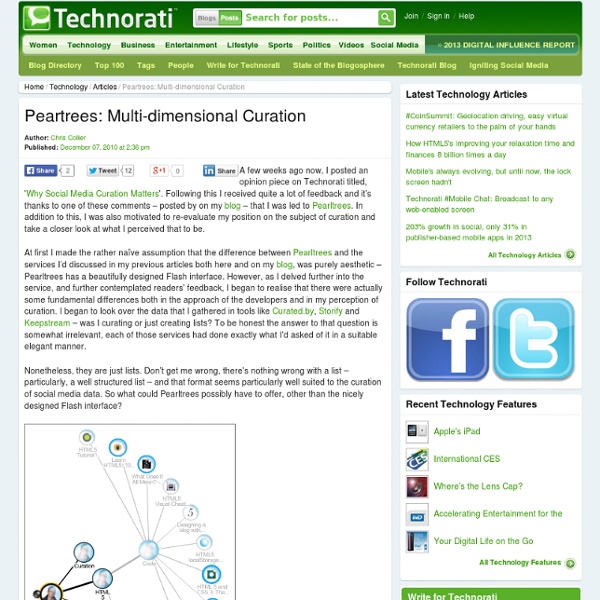Peartrees: Multi-dimensional Curation
A few weeks ago now, I posted an opinion piece on Technorati titled, 'Why Social Media Curation Matters'. Following this I received quite a lot of feedback and it’s thanks to one of these comments – posted by on my blog – that I was led to Pearltrees. In addition to this, I was also motivated to re-evaluate my position on the subject of curation and take a closer look at what I perceived that to be. At first I made the rather naïve assumption that the difference between Pearltrees and the services I’d discussed in my previous articles both here and on my blog, was purely aesthetic – Pearltrees has a beautifully designed Flash interface. However, as I delved further into the service, and further contemplated readers' feedback, I began to realise that there were actually some fundamental differences both in the approach of the developers and in my perception of curation. Nonetheless, they are just lists. The answer can be summed up in one word, depth.
<rdfs:Class rdf:about="
Pearltrees Brings Your Interest Graph' to the iPad
One of the more buzzword-y buzzwords in Silicon Valley right now is the "interest graph," which is supposed to connect people and the topics that they're interested in. Lots of startups promise to tap into the interest graph, but Pearltrees CEO Patrice Lamothe says a new app from his startup is "maybe the first time you actually see an interest graph." The new feature, which Lamothe variously describes as "visual discovery" (his pitch to the tech press) and "related interests" (what it's actually called in the app), is included in the just-launched iPad application from the previously Web-only company. Related interests have also been added to the Pearltrees website, but Lamothe is clearly more excited by the iPad version—he warned that the Web experience probably isn't quite as good. That kind of self-deprecation from a startup CEO is a little strange, except that the Pearltrees iPad app is pretty impressive.
<rdfs:Class rdf:about="
Augmented Collective Intelligence
<rdfs:Class rdf:about="
<rdfs:Class rdf:about="
<rdfs:Class rdf:about="
<rdfs:Class rdf:about="
Related:
Related:




Curons curoons! et cultivons nos perles! by jubault Dec 8